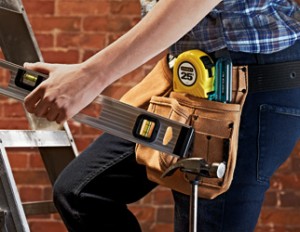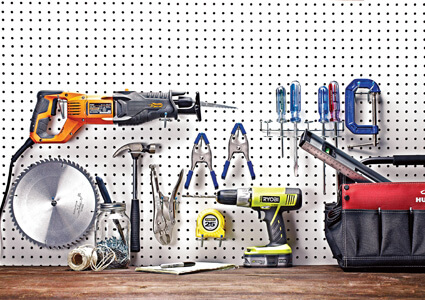The right tools for the job
A well-equipped workshop can save you a bundle in contractor bills. Have your projects run as smooth as a circular saw with these tips.
Advertisement
A well-equipped workshop can save you a bundle in contractor bills. Have your projects run as smooth as a circular saw with these tips.
 If you own a home, even a new one, sooner or later it’s going to require some work: everything from collapsed gutters, to dilapidated fences, to even more ambitious projects like a complete kitchen overhaul.
Regardless of your level of ambition, there’s a host of tools every homeowner should have. But even if you’re a budding Mike Holmes, think twice before you start filling those cupboards with pricey tools: in some cases cheapies will serve you well, and often you’re just better off renting.
If you do get the right tools and are up to the challenge of doing-it-yourself, the savings can be astounding. Toronto-based homeowner Rod Wilmot, an information technology worker by day, estimates he’s saved a whopping $65,000 by renovating his kitchen, bathroom, bedroom and hardwood floors himself, instead of hiring contractors. “Of course, I had a lot of help from friends and family members,” Wilmot says, “but everything turned out great.”
If you own a home, even a new one, sooner or later it’s going to require some work: everything from collapsed gutters, to dilapidated fences, to even more ambitious projects like a complete kitchen overhaul.
Regardless of your level of ambition, there’s a host of tools every homeowner should have. But even if you’re a budding Mike Holmes, think twice before you start filling those cupboards with pricey tools: in some cases cheapies will serve you well, and often you’re just better off renting.
If you do get the right tools and are up to the challenge of doing-it-yourself, the savings can be astounding. Toronto-based homeowner Rod Wilmot, an information technology worker by day, estimates he’s saved a whopping $65,000 by renovating his kitchen, bathroom, bedroom and hardwood floors himself, instead of hiring contractors. “Of course, I had a lot of help from friends and family members,” Wilmot says, “but everything turned out great.”

Share this article Share on Facebook Share on Twitter Share on Linkedin Share on Reddit Share on Email